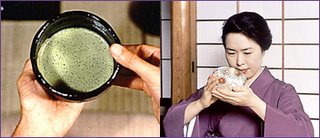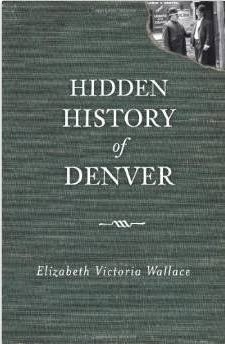skip to main |
skip to sidebar
 Mathew Hopkins was given the ominous title of Witch Finder General because of his ability to find witches and “persuading” them to confess. He was paid twenty shillings, a tidy sum in the mid 1600s, for each witch he brought to justice. The business became so lucrative that he formed his own close-knit crew to comb the countryside seeking out witches of both genders. At one time, he had 32 people under arrest of whom 19 were hanged in one day. Hundreds of people died, mostly women, many of whom died under torture or in prison.
Mathew Hopkins was given the ominous title of Witch Finder General because of his ability to find witches and “persuading” them to confess. He was paid twenty shillings, a tidy sum in the mid 1600s, for each witch he brought to justice. The business became so lucrative that he formed his own close-knit crew to comb the countryside seeking out witches of both genders. At one time, he had 32 people under arrest of whom 19 were hanged in one day. Hundreds of people died, mostly women, many of whom died under torture or in prison.
At the end of his career, Hopkins’ techniques (and wealth) came to the attention of Parliament who demanded an explanation for his cruel antics. Hopkins submitted a pamphlet to Parliament in 1647 called The Discoverie of Witches defending his actions and techniques but he was nonetheless removed from his position. During Hopkins’ reign of terror, almost four hundred men and women from local villages and towns had been condemned to death, sometimes for merely owning a cat! Matthew Hopkins is buried in Mistley Towers, a little village east of Manningtree, Essex, England.
The county of Essex in England was evidently a favorite place to hunt witches. It is known that when Elizabeth I became Queen of England; she encouraged the seeking out of witches. She stayed at St. Osyth, Essex, in 1561 and again in 1579 in the company of Lord John D’Arcy who took it upon himself to rid the village of witches.
Lord D’Arcy lived in the village of St. Osyth at St. Clere’s Hall, St. Osyth, Essex, England. In 1582, Brian D’Arcy, Justice of the Peace in St. Osyth, conducted searches for witches in the village and neighboring areas. He used the same persuasive techniques as Matthew Hopkins and by all accounts he was a successful witch hunter. A book in the Bodleian library, Oxford, states that, “A true and just recorde of the enformation, examination and confession of all witches taken at St. Osees.” The evidence consisted of accusations by neighbors and even family members of supposed witchcraft. Two local women, Elizabeth Bennet and Ursula Kemp were branded as witches. Ursula’s own son, Thomas, gave evidence against his mother at the trial. The two women were found guilty and hanged for witchcraft in 1582.
In 1921, a man digging in his garden at 37 Mill Street came upon two skeletons. The main joints of the women were bound, elbow to elbow, wrist to wrist. The skeletons are believed to be the remains of Elizabeth and Ursula, and we can only assume that they were bound together to prevent them escaping their joint grave. The above are excerpts from my book Extraordinary Places...Close to London (Page 24 & 26)

As an ardent traveler, it has been a pleasure to observe the various customs and traditions of the countries I’ve visited. So many times, a traveler may inadvertently offend a person in a host country without ever realizing they have done so – a problem I intentionally tried to avoid on a recent trip to Japan.
Originally from England, I am a tea lover, and, as most people know, we Brits take our tea drinking seriously. On my first visit to Japan, I decided to attend a formal, tea ceremony having always wondered if there was a “proper” way to serve tea, and so set off to the nearest teahouse. I was part of a group of six people, who were led through a garden and into a teahouse. The host took considerable time in preparing the tea and handed it to us in tiny cups without handles. The host used both hands as she handed the cups to each of us. In each instance, she turned the cups so that the design on the front of the cup was facing the recipient. We were told it was customary to accept the cup in both hands, and then turn the cup around so the design now faced the host. This ritual had to be observed before drinking the tea; to not do so would have been unacceptable behavior.
A similarly important ritual exists for distribution of business cards in Japan. I have been at meetings in America and England where people have handed business cards around the table like a croupier at a Blackjack table. Not so in Japan where one offers a business card with two hands and a slight nod of the head. The card is accepted using both hands. After all, it is a precious item and not to be offered or accepted without ceremony.
I believe the best way to see a country and meet the people is to travel they way they do, so I took a trip on the Tokyo underground train system. Of course, all destinations were written in Japanese and since I do not speak Japanese, I had to enlist the help of fellow passengers. I was surprised and delighted to note that many people spoke English. Once asked, they took the time to find out where I was going and point that destination out on the map, help me purchase a ticket from the automated machines, and direct me to the trains. By the way, there is no mistaking the direction to the trains as there are literally official footprint markings leading to and from the platforms on the underground. I noticed that everyone, without exception, followed the footsteps in an orderly fashion. Needless to say, I followed suit, and was pleasantly surprised to see how clean the trains were and how everyone boarded and exited the trains. The whole process of traveling on the underground Tokyo transit system was a real experience and one that I recommend other visitors.
 Cayman Brac is the furthest of the three islands that make up the Cayman Islands. The islands are located at 480 miles due south of Miami. Grand Cayman is the largest with Little Cayman and Cayman Brac to the east.
Cayman Brac is the furthest of the three islands that make up the Cayman Islands. The islands are located at 480 miles due south of Miami. Grand Cayman is the largest with Little Cayman and Cayman Brac to the east.
The Brac is approximately 11 miles long and about 2 miles wide at the center, with roads around the coastline and linking roads through the middle. There is little nightlife on the island, so visitors should expect to keep themselves busy sightseeing, eating, drinking and diving. For birdwatchers, the island hosts more than 200 species of birds. The parrot sanctuary is well worth a visit. Although we were not able to actually set eyes on a parrot in its natural habitat, we certainly heard their screeching, so knew they were watching us.
Besides having some of the most beautiful reefs in the world, the island has several interesting caves. Islanders have taken refuge in these caves during hurricanes, especially Peter’s Cave which is located high on a cliff overlooking Spot Bay at the East End. Half Way Ground Cave and the Bat Cave are also worth a visit. As water drips through the limestone, holes appear in the rocks. At certain times during the day, the sun streams through the holes and provides enough light for small plants to grow.
The lush, green tropical forest of the interior of the island compliments the rugged coastline, but there are few places for the diver to access the water easily from the shoreline. On a scheduled dive, we were taken to the Cayman’s version of the Lost City of Atlantis. A local sculpture known as “Foots” is in the process of creating a likeness of the mythical city of Atlantis. To date, he has assembled several columns, a sundial and a statue. We were pleased to note the site can be approached by land from Stake Bay and then of course a short swim to the underwater site.
Stake Bay is also great for those visitors who merely like to snorkel and free dive. The reef has an abundance of fish and coral and it was literally like swimming in an aquarium. Every fish imaginable can be seen from the tiny, iridescent beauties to the quite large, barracuda and stingrays.




